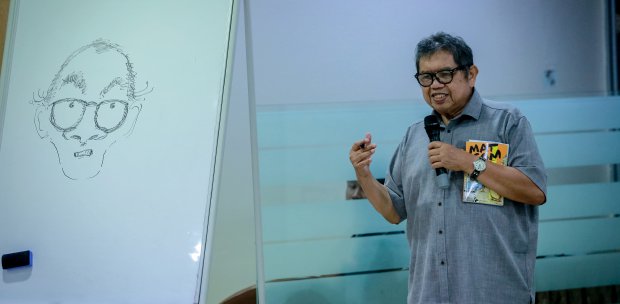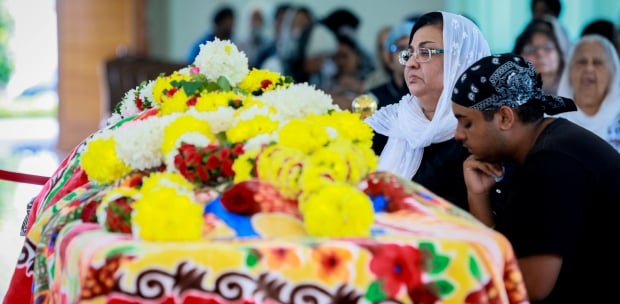POP culture can feel like religion when you're a kid; a shared set of heroes and poses, attitudes, moods and jokes.
For my late father, who was born in 1942, it was a tone set by local politics and black-and-white Tamil films starring the late M.G. Ramachandran.
In my formative years, which ran from the mid-1970s to the mid-'80s, my general outlook on life, though fuelled by the toothy Donny and Marie Osmond duo and Abba, was anchored by the world drawn by cartoonist Datuk Mohammad Nor Mohammad Khalid or better known by his moniker 'Lat'.
"Lat is short for the Malay word bulat meaning round or moon-shaped... the moon is bulat, the soccer ball too...and so is the globe... The family wouldn't call you Mohammed Nor Khalid when you're a stark-naked toddler running around the village house. The name Lat got stuck till school days, early adulthood and eventually up to the end," he explained tongue-in-cheek in an earlier interview with Eddie Campbell.
His nom de plume went on to ingrain itself within the cultural consciousness of this nation.
Who doesn't know Lat? Who, amongst us Malaysians, hasn't come across his hilarious cartoons illustrating and lampooning Malaysia's social and political scenes? Mention his name and almost every face from eight to 80 will light up.
Sifting through the broadsheets of the early New Straits Times, I'd zero in on Lat's cartoon strip, captivated by his stories and quirky views on the world. I wasn't alone. My father too enjoyed his cartoons.
It was the singular thing a six-year-old and her remote cantankerous father had in common.
While my Dad scoured through the front pages of the newspaper, he'd pull out Lat's cartoon strip from the centre of the pages for me to read. Peering over my shoulder, a rare smile would creep on his face as I giggled over the cartoonist's hilarious depiction of Malaysian life.
Back in the late 70s, my father brought back Lat's first publications Lots of Lat and Lat's Lot for my sister and me.
I'd often creep down from my bedroom to find my father (who was never much of a reader) thumbing through the pages of Lat's books late at night.
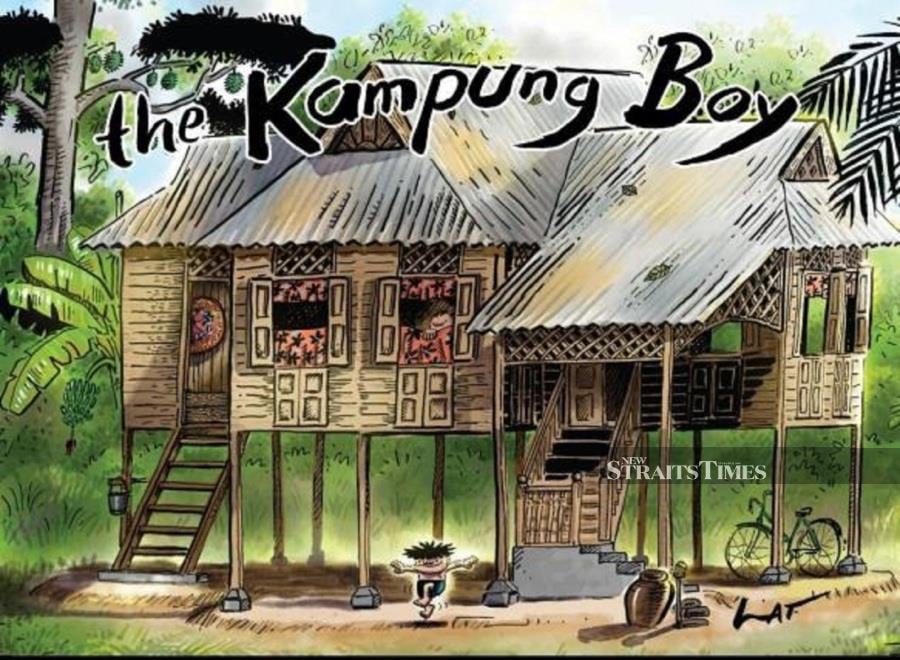
Later in 1979 when Lat's The Kampung Boy was published, my father once again brought back a copy, much to our delight.
A chronicler of Malaysian life since the early 70s, Lat made us laugh at ourselves and look back on our own childhood with nostalgia. His extensive body of work include more than 20 volumes of cartoons, and have been displayed in newspapers, magazines, graphic novels, postage stamps to buses.
But over the years, new works from the best-selling cartoonist grew less frequent. My dog-eared copies of Lots of Lat, Lat's Lot and The Kampung Boy were eventually given away.
Dad stopped reading, and grew even more distant as I grew up. Our little connection over Lat seemed irretrievably broken.
Old Lat cartoons would somehow resurface during festivals and national day. After all, who better than Lat to feature the "Malaysiana" we longed for — where times were simpler and people were kinder to each other?
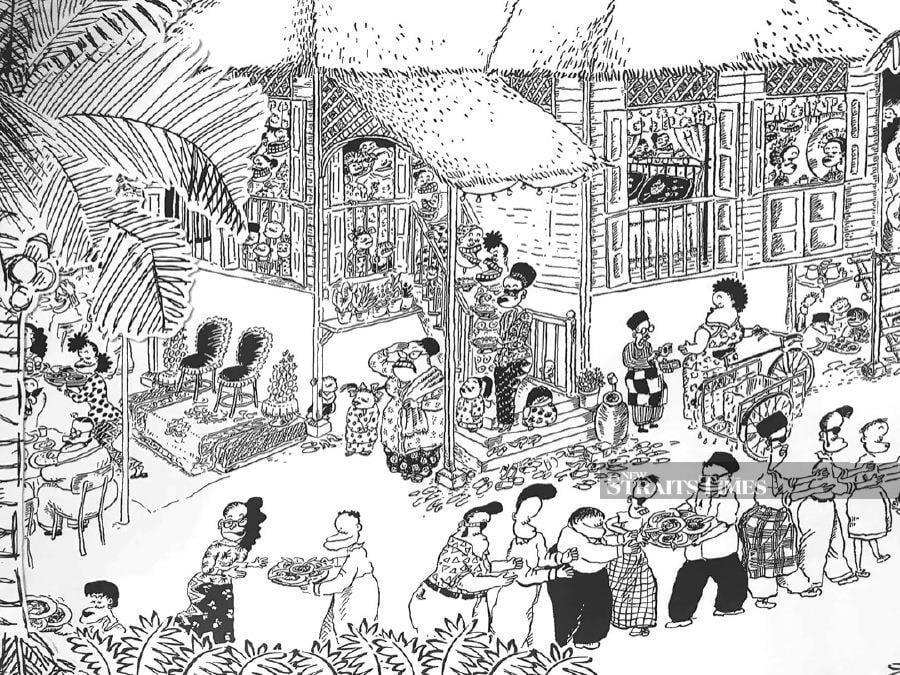
He represented the kind of Malaysia we seem to be missing these days. When friendships were forged beyond the barriers of race, religion or politics. When we could laugh at ourselves, our strange quirks and our unique diversity. Lat drew a Punjabi wedding, a Malay wedding, Indian uncles, Malay pakciks and, of course, who doesn't recall his art teacher Mrs Hew?
As I went on to become a journalist at the New Straits Times (a place where Lat once worked as a junior reporter), I longed to meet the elusive man deemed as a national treasure by many.
"Oh, he doesn't give interviews," I was told when I asked around. He confirmed that in another interview, telling bluntly: "People don't want to read about me. They know my life story, the two books of cartoons (The Kampung Boy and Town Boy) were all about my life and then there was 30 Years of Lat. There's nothing new that I can say about myself."
It would seem that the man who brought us much humour in the past was determined to retire in obscurity. His cartoons spoke for him, he insisted. There was nothing more he wanted to say.
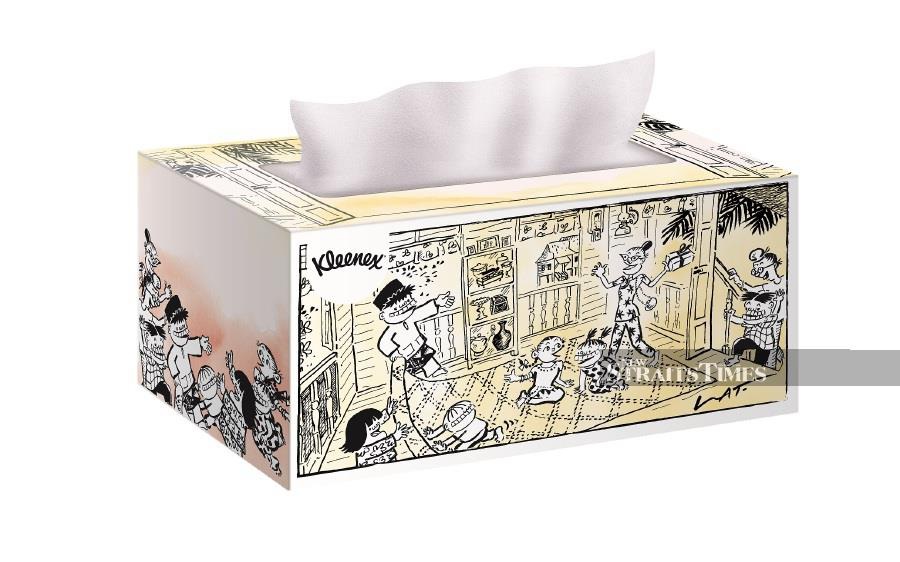
Then in recent times, his name surfaced again. His familiar etchings depicting scenes from his best-selling The Kampung Boy have been featured on limited-edition Kleenex tissue boxes as part of their #SoftisStrong campaign to inspire Malaysians to embrace their softer side and show kindness to one another.
Who better than Lat to remind us of our past and our potential to become better people during these perilous times?
"Would you like to interview Datuk Lat?" I was asked. I said yes immediately. I was excited. After all these years, I'd finally meet the familiar cherubic face of my childhood. How could I turn that rare opportunity down?
PASSING THE BATON
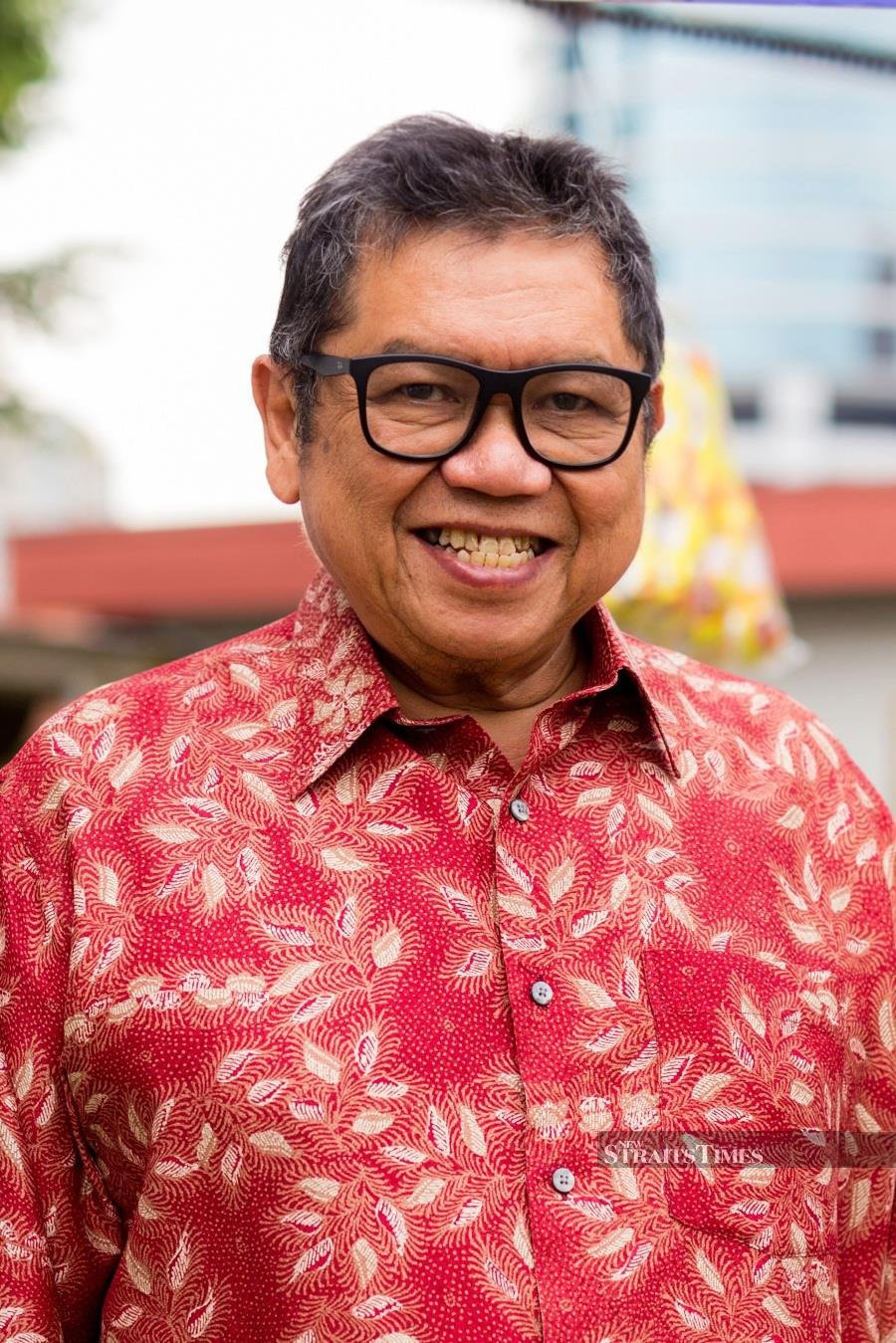
"Err... Datuk Lat, the volume! You need to adjust the volume!" I mouth while motioning for him to adjust his computer. It's not exactly an ideal way of conducting an interview, but my much-awaited visit to meet the cartoonist in Batu Gajah was unceremoniously cancelled due to the sudden spike in Covid cases nationwide.
We're now meeting, albeit remotely over a Zoom call. I'm disappointed, but it's still a chance to speak to my favourite cartoonist.
Lat peers at me through his glasses and fiddles with his computer.
"Hello… hello... can you hear me?" his deep voice resonates through the speaker.
"I miss your cartoons. I'm sure most Malaysians do!" I blurt out suddenly. Hardly a worthy introduction but he grins in response.
He seemed bemused by the wave of admiration he'd unleashed with his words, pictures and stories. Seemingly without even planning, he appears to have stumbled on a universal language that struck a chord with millions of readers nationwide and even across the globe.
He pauses a moment before acknowledging my outburst: "People are still hungry for laughter and humour but the situation isn't really calm now. Not like during my time. Maybe because I was young then, and we could laugh easily."
For a moment he looks slightly glum, telling me: "I was one of those few, I daresay, who invited people to smile in the morning while reading their papers."
Memories of my father chuckling as we looked at Lat's cartoon in the newspapers flash through my mind, leaving me feeling wistful.
These days are different, he laments mournfully, saying: "I don't even read the papers anymore. There's nothing there to make me smile. The whole world seems to have a gloomy outlook."
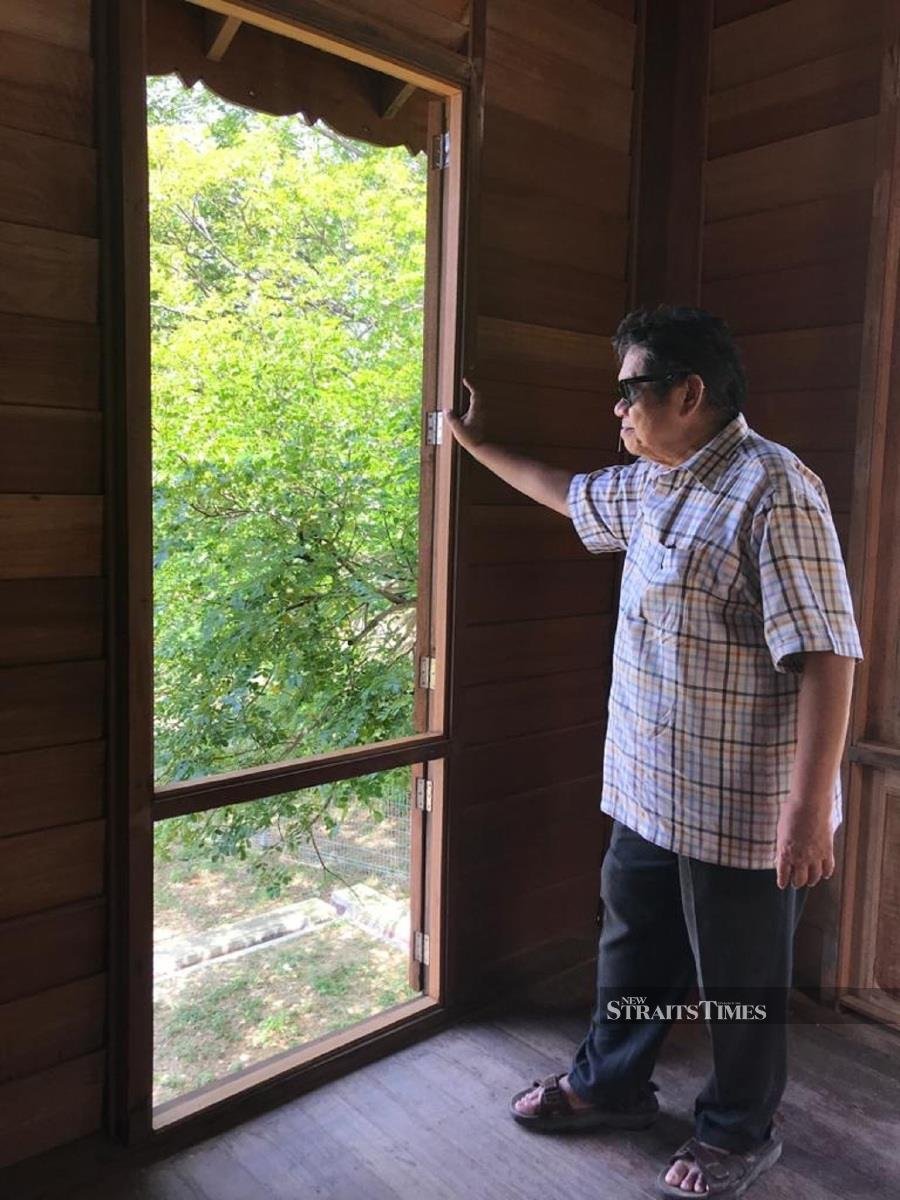
I wonder aloud if he's stopped his comics because there's nothing left these days — given our current national consciousness — to laugh about. As it was, Lat was a chronicler of the quintessential Malaysian life in the past.
There was always something to laugh about in the past, and Lat's real genius lay in his ability to say the unsayable about the issues of the day with humour and an absence of malice.
"Have we lost what we used to have before?" I press on as he pauses again to think, brows furrowed.
He finally shakes his head, disagreeing with me. "If there's anything lost, it's me losing it, not Malaysians," he admits frankly.
Seeing my surprised look, he nods his head, continuing dryly: "Well, age caught up with me. Very soon I'll be 70. Hopefully I'll make it!"
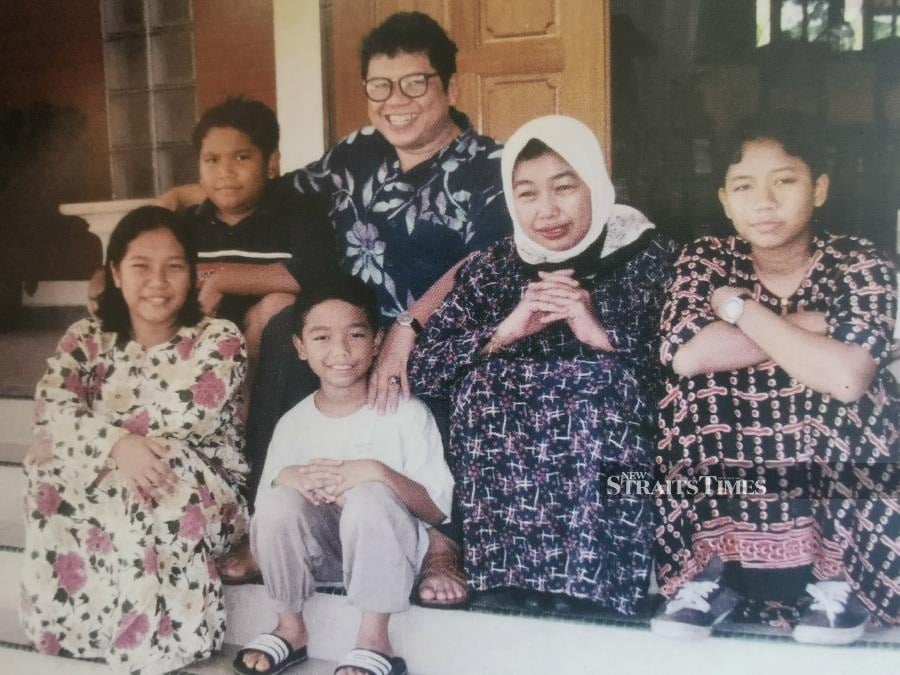
He has passed the baton on to the younger group of cartoonists.
"I feel I have to leave all the things I used to do to the young ones. They have energy, they have fresh minds and fresh eyes to view the world. They can look around and find so many things to draw."
With an almost fatherly pride, he continues: "There's so much progress that has happened since my time. Malaysians now are paying more attention to our own animation and cartooning.
"We have animated series running on international levels like Upin & Ipin and BoBoiBoy. We have Malaysian cartoonists and comic illustrators winning international awards. We should be very proud."
FATHER'S LEGACY
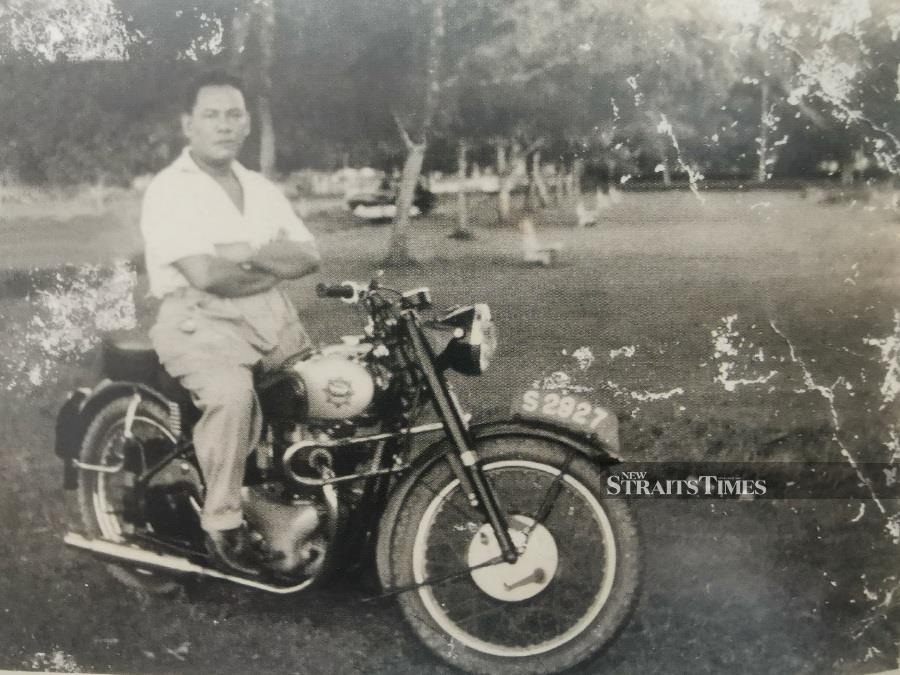
He's passed on the baton with easy grace. One, it would seem, that he himself had unwittingly received from his father all those years ago — 5th Malay Regiment clerk Mohd Khalid Mohd Noh, who, by his son's revelation, was a very artistic man.
"He could not only draw well, but he was very musical too. He played various musical instruments, including the violin and the guitar!" Lat tells me, adding as an aside with a grin: "I also got my love for music from him!"
The late Mohd Khalid kept his talent close to his chest. Lat looks a little wistful as he mentions that his father never disclosed much about his musical days.
"There was a road called Theatre Street in Kota Bahru, Perak. We used to laugh about it during the 1950s because there was no theatre at Theatre Street… but one had existed there before the Second World War."
His father was among those who performed at the theatre back then. "He could sing and dance. I have a feeling he was part of a Bangsawan (a type of traditional Malay opera or theatre accompanied by music and sometimes, dances) troupe but my father was quite tight-lipped about his past," he says.
As time passed, when tin and rubber prices began to fall — as with the economy — the local performing arts scene became less vibrant.
His father abruptly stopped playing music and quashed his artistic side, as advised by his own father to take a vow to that effect. Sacrifices had to be made, and his father was sternly reminded that he had a family to take care of.

"That, my father told me," recounts Lat quietly. "He was told to stop by his father, my grandfather; but it didn't stop him from guiding me, his son, in my drawings."
His father was adamant to allow his son to pursue his love for art. He'd cart rolls of glossy paper ("You know… the kind meant for charts and all that!") on his bicycle to bring home from the office. After parking his bicycle, he'd carry the rolls to their single-storey house and throw them inside. "Draw!" he'd bellow to his son.
As Lat drew, his father would give pointers to the budding cartoonist. "He'd tell me to add in the shadows… that sort of thing!" he tells me, eyes twinkling, adding simply: "That was the sort of fellow he was!"
In his memoir Lat: My Life and Cartoons, published in 2016, Lat shares further of his father's interest in his son's artistic talent. Back in 1955, his father took him to the circus and asked the young boy to draw the elephant they saw in the show.

"My father explained that I could think of the elephant's face as a human face with a long trunk instead of a nose," he wrote.
"So, starting at the top, that's what I drew, and it looked alright. But then when I got to the chin, I drew a human chin, and all of a sudden, the elephant didn't look so good. My father also drew for me. He was good at drawing, using very confident single lines. Sometimes he'd correct my early attempts at drawing and would motivate me."
FATHER'S PRIDE
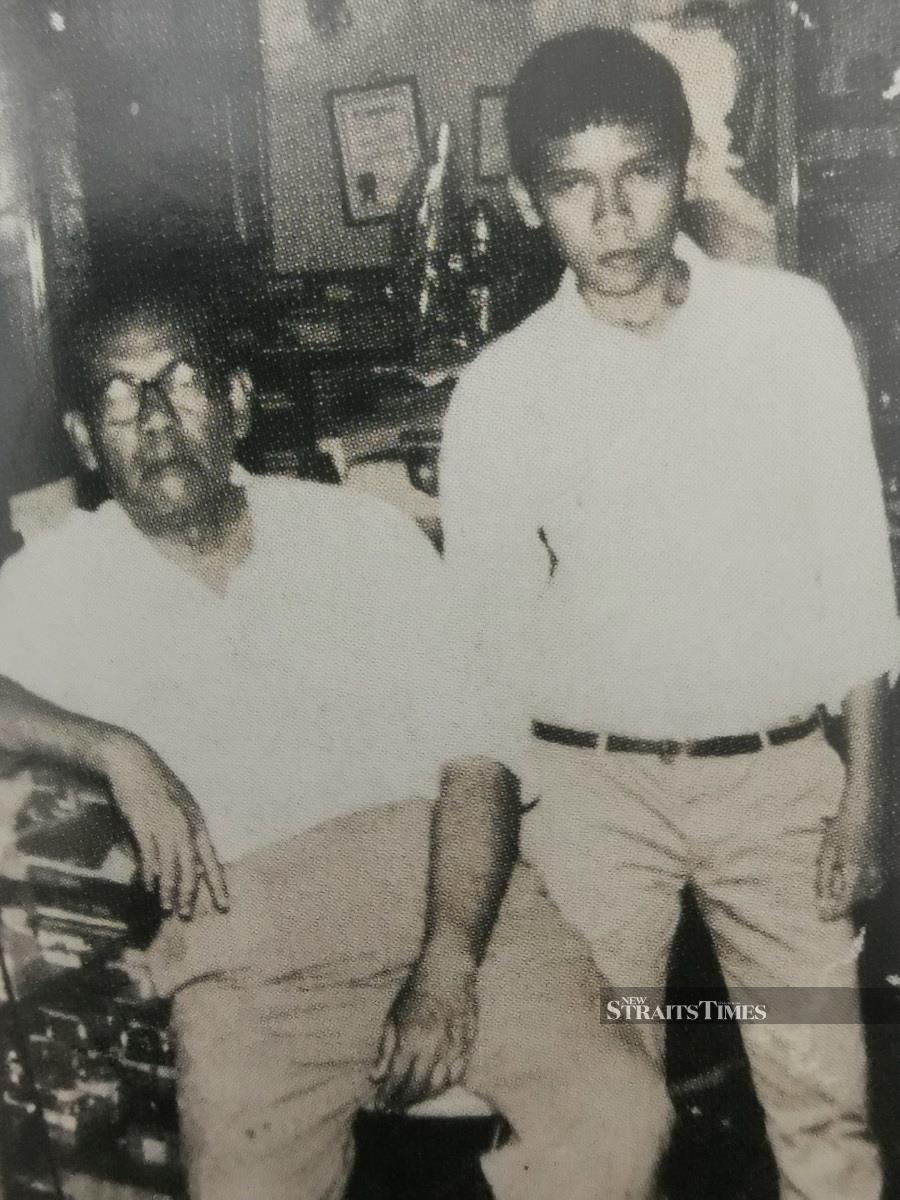
Lat's penchant for creating comic strips began shortly after his father brought home the rolls of paper from the office. He'd fold the paper given by his father into small sections and draw his own comic strip.
When he was eight, Lat created his own story entitled Rumah Puaka (Haunted House) using the Jawi alphabet.
"It was the work of somebody very interested in drawing and telling stories; I was getting serious," wrote Lat in his memoir.
The turning point in his primary school life was in Standard Four when he passed the Special Malay Class examination and went to an English school in Pasir Putih, Ipoh.
It was here that he not only discovered new friends but where he was encouraged to draw by his teachers. "In school back then if they knew you could draw, they'd ask you to draw everything!"
His father continued to play a significant role in nurturing his talent, proudly encouraging him to draw for friends and relatives alike.
"My father encouraged me a lot," he shares, smiling. "We were quite close growing up. But there was always respect. You wouldn't want to get on his wrong side. That was the kampung mentality back then — you respected your parents and you wouldn't dare rebel against them!"
Lat's first cartoon was printed in Majallah Filem, published by Shaw Brothers in Singapore in 1964. His big break, however, came with a comic strip called Tiga Sekawan which he sent to Sinaran Brothers in Penang. Sinaran Brothers bought the comic book for 25 Ringgit.
"I adopted much of the style of The Beano, The Dandy and The Beezer then. Those formed our staple reading diet back in the 1960s," he writes in his book.
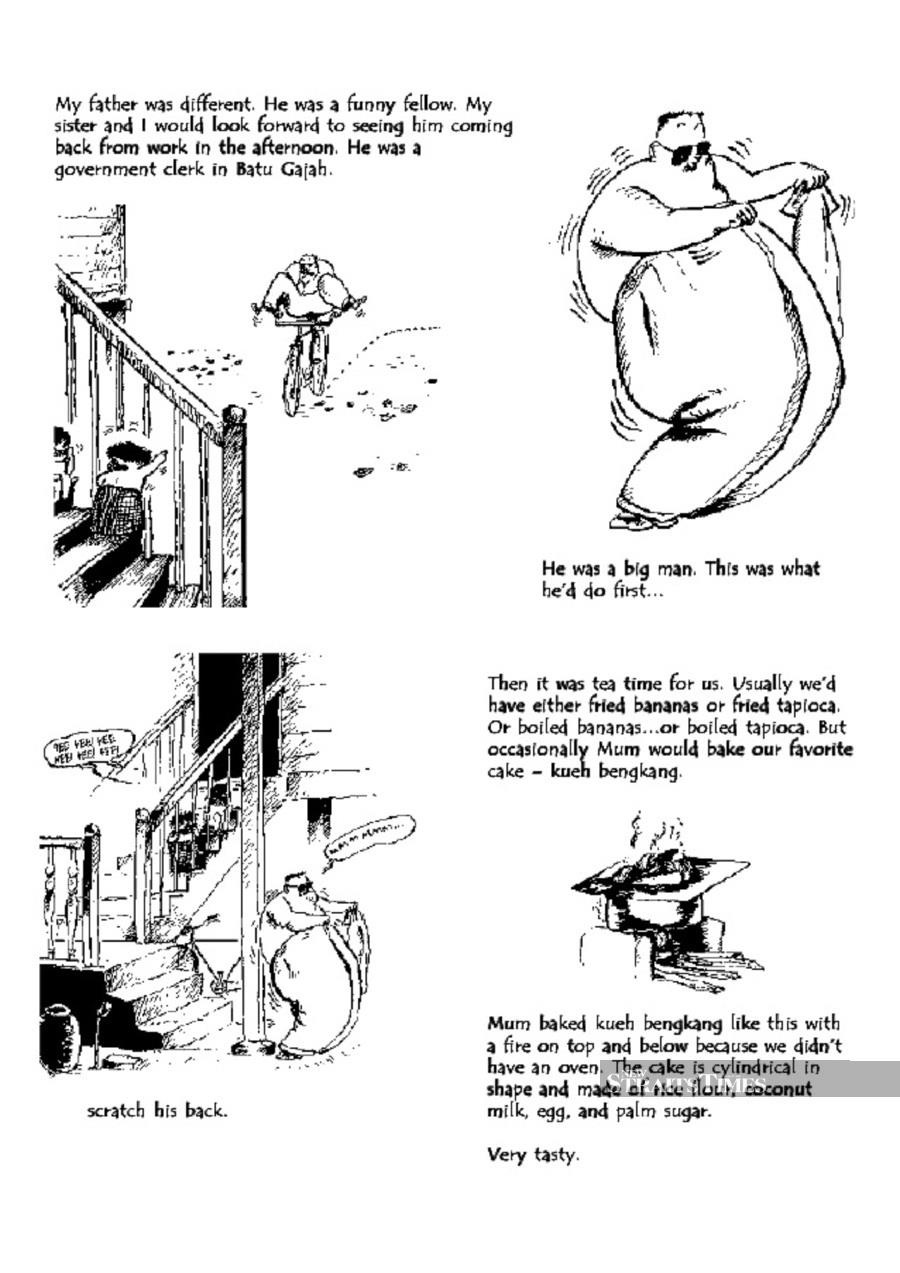
His father, he added, used to buy him those comics second-hand in bulk from the pasar minggu (weekly market) in Ipoh.
From 1964 to 1966, Lat continued to contribute to Majallah Filem and by the end of 1965 he had a regular strip called Tua Keladi.
In 1967, he began drawing for Utusan Malaysia and the following year he started drawing for Berita Minggu. In 1968, he started Keluarga Si Mamat which was also picked up by Berita Minggu. He completed his Senior Cambridge in 1970 and began work in Kuala Lumpur as a crime reporter.
His primary interest remained with illustrations and drawings, however, and he eventually became a full-time cartoonist at the New Straits Times, beginning with a series called Scenes of Malaysian Life which catapulted his work into the limelight.
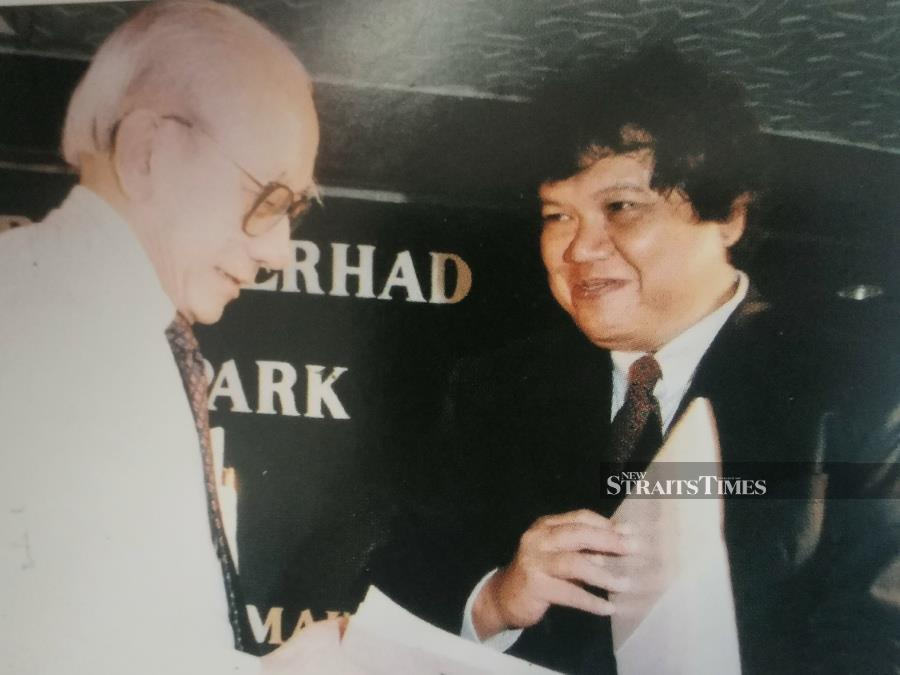
Your father must be so proud, I state. "Well he wasn't effusive in his praises," admits Lat matter-of-factly, before adding: "But I remember telling him shortly before his death in 1974 that my work had been accepted by the Asia Magazine."
It was a magazine that he and his father enjoyed in the past. "Asia Magazine was our magazine. Every Sunday we'd read it," he recounts half-wistfully, adding: "He never got to see my first English publication."
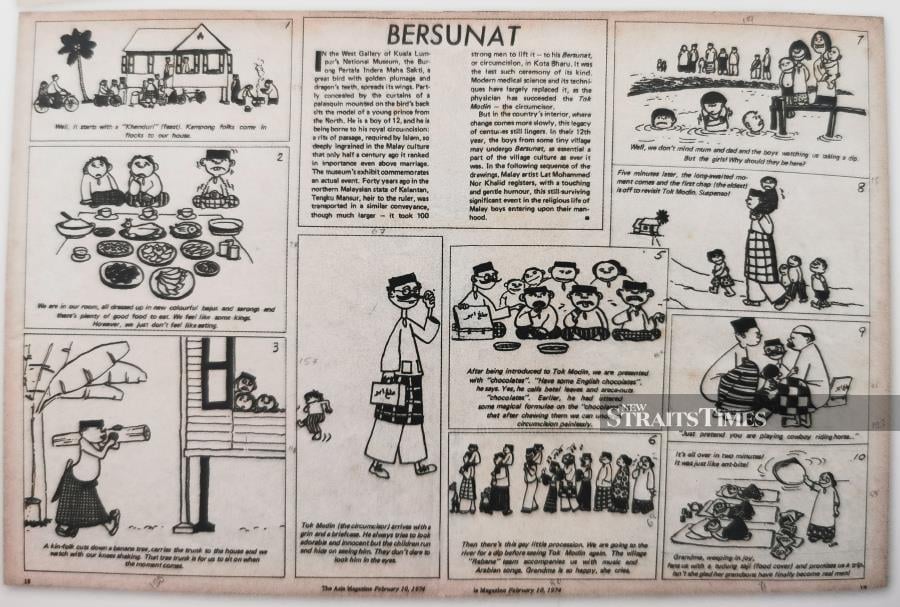
Memories of his childhood and his relationship with his late father have been described in touching detail in The Kampung Boy.
As with all Asian fathers, words weren't necessarily important in cementing a relationship with his son. Action spoke volumes of his father's deep affection, and it's something that the cartoonist acknowledges through the many stories of his childhood.
In this regard, the nearest thing to Lat's stories is perhaps the song. I don't think there's any song that we fall in love with immediately: we have to listen to it again and again — sometimes obsessively — until it has infiltrated us and accompanies us in our daily life.
To me, his comics are similar to this: they live where we dream to live. There's something unique and profound here; his unique tales are a privilege way of renewing the buried emotions of our childhood.
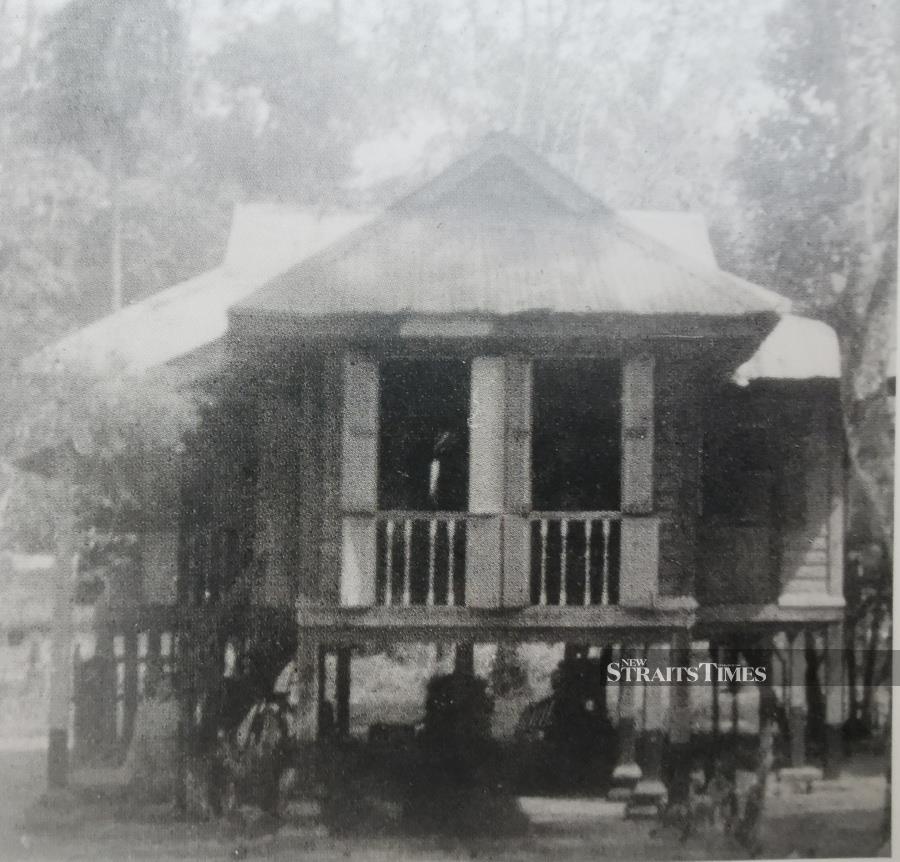
I bought The Kampung Boy as a gift for my father shortly before his death. He didn't say anything but smiled as I placed the book in his frail hands. By this time, he couldn't really read anymore. But he understood the gesture.
It was a reminder of the times we spent reading Lat's comics together when I was younger. Words weren't necessary. As Lat would probably understand, through all the years spent with his father, action does speak louder than words.



